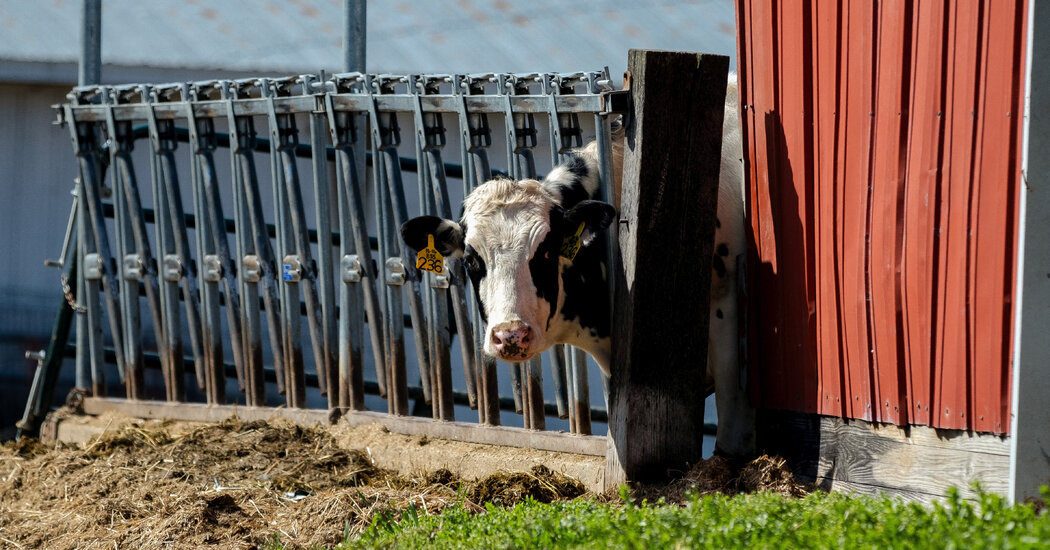The bird flu outbreak in American dairy cattle may have begun in January, or even as early as December, a new analysis of genetic data suggests.
The Department of Agriculture announced in late March that dairy cattle in Texas and Kansas had tested positive for the virus, called H5N1. It has since reported cases in dozens of herds in eight states.
On Tuesday, federal health officials said they had discovered fragments of H5N1 in milk samples obtained at various sites across the nation. The fragments pose no threat to consumers, the officials said.
It is unclear exactly how the cows became infected, but the most likely source is feces or other secretions from a wild bird infected with the virus.
Scientists in the United States and elsewhere have criticized federal agencies for withholding key information about the outbreaks, including genetic sequences of the virus from infected cows, The New York Times reported on Friday. The data may hold valuable clues to the evolution of the virus and the extent of the outbreak.
On Sunday, the department published 239 genetic sequences, but it omitted some details regarding the locations from which they were obtained and the dates.
Still, the information is enough to glean that a single spillover event months ago, from bird to cow, set off the outbreak, said Michael Worobey, an evolutionary biologist at the University of Arizona.
Dr. Worobey said he worked late into Monday night and early Tuesday morning analyzing the genetic information. He found that the sequences all carried the same set of mutations that allow the virus to infect mammals — which would be unlikely had the virus jumped from birds to cows more than once.
He said that “this really does just look like a single introduction.”
H5N1 is highly lethal in birds, but so far has led to mostly mild symptoms in cattle and in one farmworker in Texas who became infected. Infected dairy cows seem to carry large amounts of virus in their milk, which turns thick and yellowish.
But the Department of Agriculture has released little information on other aspects of the outbreak, including how long cows remain ill and how long it takes them to clear the virus from their bodies, said Dr. Nahid Bhadelia, director of the Boston University Center on Emerging Infectious Diseases.
“We just don’t know enough about the natural history” of bird flu in cows, she said.
Federal scientists are just beginning to analyze more samples from cows without symptoms to learn whether the outbreak may be more widespread than initially thought.
“If this really is something that’s been going on for this long, it seems quite plausible that it’s moved already out of the U.S.,” Dr. Worobey said. Canada imports cattle from the United States, he noted.
Some farmers in Texas had been reporting sick cows since at least February. Cows are not usually infected with this type of influenza, and federal officials spent weeks trying to identify the cause of the outbreak.
But rather than research each potential pathogen, officials could have turned to a technique called metagenomic sequencing, in which samples can be tested for nearly all known pathogens at once.
That technique is more expensive but would save valuable time in situations like this, Dr. Worobey said.
“I think that’s one of the real lost opportunities here,” he said. “Just the fact that we don’t have eyes on these things around the world, and even in the U.S., we keep getting caught with our bathing suit off when the tide goes out.”
Emily Anthes contributed reporting.







